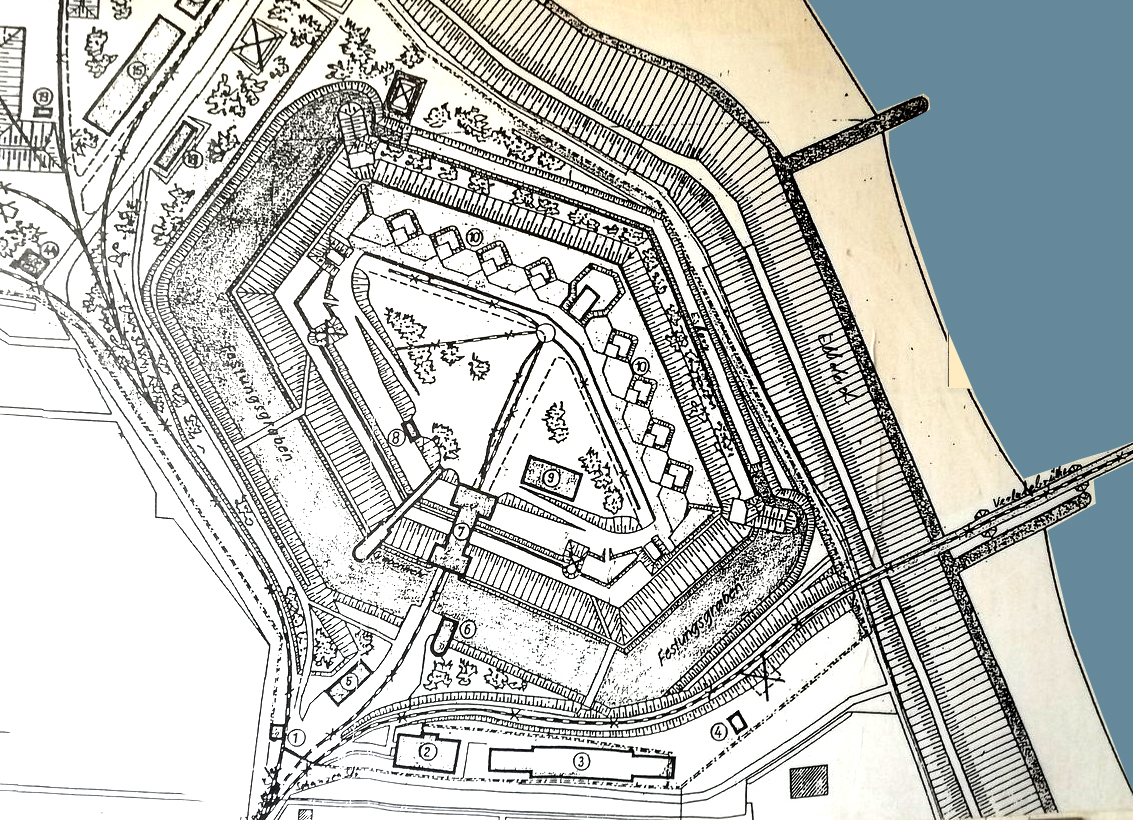Hier könnte Ihre Werbung stehen.
Fortress Grauerort is a Prussian high wall fort on a small headland directly at the waterway of the Elbe. It was built North of fortress city Stade from 1869-79 to protect Hamburg port located 50km away from enemy ships from the North Sea. Therefore, the fort was equipped with two 68 m long sides along the Elbe which offered space for altogether 10 modern cannons. Cafeteria . In the museum area and during interesting Fortress tours secrets about the history and special architecture of the fortress are disclosed. A tour with the historic Field train „Groveblitz“ at the fortress area is the highlight for all visitors. Unplugged Sessions , to hobby and art exhibitions, Old timer meeting, history spectacles to the famous Bützfleth Christmas market . Often the special atmosphere at fortress Grauerort serves as a wedding or party location.
FORTE CULTURA® Travel Recommendations
Experience World
Fortress Grauerort (Grove)
A visit of the fort becomes a tour into the past. Discover the diverse offers at fortress Grauerort with FORTE CULTURA®, directly at the Elbe Cycle Route. Dive into the adventurous history of the small headland which served the Kehding pirates as their base of attack already in the 13th century.
Landing bridge of fortress Grauerort (mines – loading bridge)
Fortress Grauerort was relieved in 1895 from its original function as artillery fort. In World War I it was used as a provisional depot for sea mines which solidified from 1922. In 1926 fortress Grauerort received an own landing bridge , which allowed the loading of sea mines until 1945. The transport from the fort to the ships was done with a specially created field train, today’s “Groveblitz” .
„Groveblitz“ - Fieldtrain Fortress Grauerort
At the fortress area of fortress Grauerort, there is a regularly going field train round tour for visitors with a track width of 600mm. Committed field train friends invite the visitors to have a seat in the old rebuilt ammunition wagons. The train track shows a beautiful landscape and leads on one kilometer from the engine shed to the former landing bridge at the Elbe and back. "Groveblitz" tours on Sundays and holiday: 11:30/13:00/14:30 o’clock (additional tours on request)
Tour Offers and Information
Association Festung Grauerort e.V.
Map
Monument and History
History Already the Kehdinger Seeräuber saw the strategic meaning of the well-location headland of Grove (Grauerort) into the Elbe. They started their raids in the 13th/14th century until the bishop of Bremen and Verden finally put a stop to this.Schweden ebuilt an entrenchment North of today’s fort to stop the advance of the Danish over land. 100 years later the French built a coast battery to enforce their continental barrier and stationed a whole company of French infantry. Preußen to Stade in 1866. They also saw the location advantage and built the artillery fort from 1869 to 1879 with new-Prussian fortress architecture, today’s fortress Grauerort. Already during the German French war from 1870/71 Grauerort was used provisionally but stayed undamaged. Outdated because of the fast weapon development, the fortress was deleted from the row of active fortresses in 1895. British Army in 1945, the fortress was preserved and served as an emergency accommodation until the end of the 50s. From 1960-1985 the fortress area served as a place for the disassembly of ammunition.
Quelle: Hannelore Schneidereit Quelle: Merian Quelle: ©www.hansemeister.com Quelle: ©Michael Meister, Lübeck
Architecture The brick stone fortress Grauerort is located directly at the Elbe dike and has a hexagonal groundplan. The earth walls of the fortress reach up to 10 meters. Therefore, it is a high wallf ort . central work of the casemates has anammunition lift . Jede der beiden 68 Meter langen Festungsflanken wurde mit jeweils fünf modernen Hinterlader-Rücklauf-Geschützen bestückt. Carnot Wall (Escarpe) which was to be defended by two throatlatch bunkers with cannons and weapons. The landside walls were surrounded by a 20m wide water trench. The only way to enter the fortress was a folding bridge in the South. From there through a gallery with anti-storm grid you reach the inside of the fortress. A gun caponier and a watch bunker secured the bridge. mine depot from World War I needed architectural changes. These are being removed since 1997 by the funding association fortress Grauerort e.V. regarding the landmark status of the facility. With diverse culture events, historic festivals, and professional tours the Fortress Grauerort can be experienced as important military historic cultural heritage of the metropolis region Hamburg and the Elbe fortresses.
Quelle: Festungsbauten.de Quelle: Stade Tourismus Quelle: Verein Festung Grauerort e.V. Quelle:
Nature Experience The fortress Grauerort, located in a piece of woodlands only a few meters away from the Elberadweg (Elbe Cycle Route) , the Elbe Dike and the Elbe Beach , is an insider tip, also for nature lovers. 40 idyllic caravan parking spots offer best conditions for camping vagrants for one or more nights. natural history museum PANGAEA opens its small exhibitions in two rooms in the entrance area of fortress Grauerort for kingergarden and school groups, birthday and group events, families and fortress visitors. The diverse museum educational offers are completed by nature tours about geology, botany, zoology, or the treasury Elbe. Elbe Hike and Cycle Route North Sea Coast Cycle Route and the Cycle Round Route „From Devil’s swamp to mud flats“ attract numerous active nature lovers. The Elbe marshland between Stade and Cuxhaven are a unique bird migration and breeding area. bird watching-Tour swamp watching-our Tide watch tour allow to get to know the unique tide landscape of the Elbe in connection to water and to discover the reed paradises of the Lower Elbe.
Quelle: Touristikverein Kehdingen Quelle: Von ItDozent - Eigenes Werk, CC BY-SA 3.0, https://commons.wikimedia.org/w/index.php?curid=4918526 Quelle: ©Mario Weigt Photography Quelle: ©Verein Festung Grauerort
Partner



